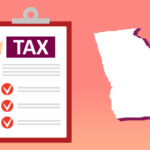How Much Of Your Income Should Rent Be is a critical question for financial stability and achieving your goals. At income-partners.net, we believe that determining the right amount involves understanding your unique financial situation and making informed choices about housing costs, with the aim of helping you find the perfect balance between comfortable living and financial well-being. By exploring the various rules and factors that influence rental affordability, such as location and lifestyle, you can unlock opportunities to enhance your financial health. Consider this your guide to rental affordability, financial planning, and smart spending habits.
1. Understanding Personal Rent Affordability
Deciding how much of your income should go to rent is a crucial financial decision. Exceeding the commonly recommended threshold of 30% of your gross monthly income can strain your budget, hindering your ability to cover other expenses and meet savings goals. However, personal rent affordability is influenced by various factors, including your overall budget, outstanding debt, geographic location, and additional housing-related costs.
Careful examination of your personal finances is key to determining a comfortable and sustainable rent payment. This involves analyzing your income, expenses, and savings targets to identify the maximum amount you can allocate to housing without causing financial stress. Let’s break down the steps to figuring out what works for you.
2. Calculating 30% of Your Gross Income for Rent
To calculate 30% of your gross income for rent, you need to determine your earnings before taxes or any other deductions are taken out. This is your gross income. You can typically find this figure on your paycheck, often labeled as gross pay.
- Bi-Weekly Pay: If you’re paid every two weeks, multiply your gross pay by 26 (the number of bi-weekly periods in a year) to get your annual gross pay. Then, divide that annual amount by 12 to find your average monthly gross income.
- Semi-Monthly Pay: If you receive two paychecks per month, simply multiply your gross pay by two to determine your monthly gross income.
- Monthly Pay: If you’re paid monthly, the gross pay amount listed on your paycheck is already your monthly gross income.
Once you have your monthly gross income, multiply it by 0.3 (30%) to find the maximum amount you should ideally spend on rent.
For example:
Monthly Gross Income: $5,000
30% of $5,000: $5,000 x 0.3 = $1,500
According to the 30% rule, someone earning $5,000 gross per month could comfortably allocate $1,500 per month to rent. However, remember that this is just a guideline. If you live in an area with significantly higher average rents, exceeding this threshold might be necessary. Conversely, if your other expenses are substantial, spending less than 30% on rent could be more prudent to maintain financial stability.
3. Situations Where Spending More Than 30% on Rent Might Be Justified
Depending on your individual circumstances and financial goals, allocating more than 30% of your income to rent can sometimes make sense. Here are some potential benefits to consider:
- Lower Commuting Costs: Choosing a more expensive apartment closer to your workplace or educational institution can save you significant time and money on transportation.
- Enhanced Safety and Security: Prioritizing a safer neighborhood might involve higher rental costs, but the peace of mind it provides can be invaluable.
- Improved Quality of Life: Living in a location that significantly enhances your quality of life, such as being near nature, cultural venues, or social opportunities, might justify the extra expense.
- Valuable Amenities: An apartment that offers unique amenities, such as a gym, included utilities, or on-site parking, can potentially save you money in other areas, offsetting the higher rent.
4. Strategies for Budgeting for Higher Rent Costs
If you find that higher rental costs are justified in your situation, you might need to adjust your budget to accommodate them. Here are some strategies to help you cover your rent payments when they exceed the recommended 30% threshold:
- Split Costs With A Roommate: Sharing rental costs with a roommate can significantly reduce your individual housing expense, allowing you to afford a nicer living space without overextending your budget. Services like Zelle® can make splitting costs seamless.
Alt text: Two roommates splitting bills and expenses in a shared apartment, demonstrating cost savings.
- Reduce Discretionary Spending: Review your spending habits to identify areas where you can cut back. Reducing discretionary expenses like eating out, entertainment, and non-essential shopping can free up funds for higher rent costs.
- Pay Down Outstanding Debts: Allocating more of your budget to paying down debts like credit cards and auto loans can help you eliminate them faster. Once these debts are paid off, you can redirect those funds to your rent payments. Debt consolidation or refinancing might also lower your monthly payments immediately, freeing up cash for rent.
 Debt Reduction Strategy
Debt Reduction Strategy
Alt text: A visual representation of a debt reduction strategy, highlighting credit cards and loan payments.
- Increase Your Income: Explore opportunities to increase your income, such as asking for a raise or promotion at work, taking on a part-time job, or engaging in freelance or gig work. Selling unused items can also provide a short-term cash boost.
5. Applying the 50/30/20 Rule
If the 30% rule doesn’t align with your financial situation, consider the 50/30/20 rule. This broader budgeting framework divides your monthly after-tax income into three categories:
- Essential Expenses (50%): This includes necessities like rent, groceries, utilities, insurance, minimum debt payments, and transportation.
- Non-Essential Expenses (30%): This covers discretionary spending like dining out, entertainment, travel, and hobbies.
- Savings and Debt Payments (20%): This portion is allocated to savings goals and additional debt payments beyond the minimum requirements.
The 50/30/20 rule balances financial obligations, lifestyle, and wealth building. By categorizing your expenses, you can fund your needs and wants while saving and paying down debt, avoiding the cycle of living paycheck to paycheck.
6. How The 50/30/20 Rule Impacts Rent
When determining how much to spend on rent, it’s helpful to consider it in relation to your other financial obligations. Unlike the 30% rule, the 50/30/20 rule is based on percentages of your net, or after-tax, income.
For example, let’s say your gross monthly income is $4,500, and your monthly rent is $1,400, exceeding 30% of your gross income. However, if your net monthly income is $4,000, the 50/30/20 guideline suggests you can spend:
- $2,000 (50%) on essential expenses
- $1,200 (30%) on lifestyle wants
- $800 (20%) on savings and extra debt payments
If your remaining essential expenses are $600 or less ($2,000 minus $1,400), you can likely cover your rent without undue financial strain. However, if it stretches your budget too thin, reducing your rent expenditure might be necessary to meet your monthly financial obligations.
 Budget Allocation
Budget Allocation
Alt text: A visual representation of budget allocation, showing percentages for essential expenses, lifestyle wants, and savings.
7. Additional Costs Beyond Monthly Rent
While rent is typically the largest housing expense, other costs should be factored in. As you analyze how much of your income should go to rent, remember to consider the following:
- Security Deposits: Many landlords require a security deposit, often equal to one to two months’ rent, which is due upfront when you sign the lease. For a $1,000/month apartment, this means having an additional $2,000 to $3,000 available upon move-in.
Alt text: A concept image representing a security deposit for renting an apartment, emphasizing the need for upfront funds.
- Renters Insurance: Many landlords and property management companies mandate renters insurance as part of the rental agreement. Renters insurance provides valuable protection for your belongings in case of theft, flooding, or other incidents. It also offers liability coverage if someone is injured in your unit. Standard renters’ insurance plans typically cost $15 to $30 per month.
Alt text: Illustration of renters insurance coverage, highlighting protection against theft, fire, and water damage.
- Utility Costs: If utilities like electricity, water, and garbage pick-up are not included in the rent, factor these expenses into your housing budget. Utility costs can surprise new renters, especially in older apartments with poor insulation or inefficient appliances.
Alt text: A stack of utility bills, emphasizing the importance of budgeting for electricity, water, and gas expenses.
- Moving Costs: Don’t underestimate the cost of moving into a new rental space. Hiring movers, renting moving vans, replacing old furniture, and other moving-related expenditures can quickly add up.
8. Making Informed Rental Decisions
The amount you should spend on rent depends on various factors, including your financial situation, location, and lifestyle.
- According to a study by the U.S. Census Bureau, over 40% of renter households spend more than 30% of their income on rent. This highlights the need for personalized financial planning to determine what’s affordable.
- Research from Harvard Business Review suggests that considering factors beyond income, such as commuting costs and quality of life, can lead to better housing decisions.
- Experts at Entrepreneur.com recommend evaluating your overall financial health and goals before setting a rent budget.
9. Final Thoughts On Rent Affordability And Financial Health
Deciding how much of your income to allocate to rent isn’t always a simple calculation. While guidelines like 30% of gross income or the 50/30/20 rule can provide a starting point, many variables influence the optimal percentage.
Carefully weigh factors like your current financial status, outstanding debts, geographic location, and lifestyle needs to make informed trade-offs between costs and desirability.
Taking the time to calculate housing expenses, compare them to earnings, and define your rental home must-haves will help you establish realistic pricing parameters. This process will provide clarity, allowing you to align your housing spending with your long-term financial goals. Remember, the ideal rent payment is one that allows you to live comfortably while still achieving your financial aspirations.
10. Discover Partnership Opportunities at income-partners.net
At income-partners.net, we understand the challenges of balancing housing costs with financial goals. We also recognize the immense potential of strategic partnerships to boost your income and financial well-being. If you’re looking for opportunities to expand your income streams and achieve financial freedom, consider exploring the power of partnerships.
- Find the Right Fit: Whether you’re a business owner, investor, marketing expert, or someone seeking new ventures, our platform connects you with partners who share your vision.
- Build Trust and Maximize Efficiency: income-partners.net helps you build reliable and productive partnerships to drive revenue and growth.
- Access Expert Resources: Discover valuable insights and templates for crafting successful partnership agreements.
- Stay Ahead of the Curve: Our platform offers the latest trends and opportunities in business collaboration, ensuring you’re always in the know.
Ready to explore how strategic partnerships can transform your income potential? Visit income-partners.net today and unlock a world of opportunities. Let us help you find the perfect partners to achieve your financial dreams.
Address: 1 University Station, Austin, TX 78712, United States.
Phone: +1 (512) 471-3434
Website: income-partners.net
FAQ: Rent Affordability
1. How much of my gross income should I spend on rent?
Experts generally recommend spending no more than 30% of your gross monthly income on rent to maintain financial stability.
2. What is the 50/30/20 rule, and how does it apply to rent?
The 50/30/20 rule allocates 50% of your net income to essential expenses (including rent), 30% to non-essential expenses, and 20% to savings and debt repayment.
3. What factors can influence how much I should spend on rent?
Factors include your overall budget, outstanding debt, geographic location, commuting costs, lifestyle, and any additional housing-related expenses.
4. Is it ever okay to spend more than 30% of my income on rent?
Yes, spending more than 30% can be justified if it reduces commuting costs, enhances safety, improves your quality of life, or provides valuable amenities.
5. How can I budget for higher rent costs?
Strategies include splitting costs with a roommate, reducing discretionary spending, paying down outstanding debts, and increasing your income.
6. What additional costs should I consider besides monthly rent?
Other costs include security deposits, renters insurance, utility costs, and moving expenses.
7. How do security deposits impact my rent affordability?
Security deposits, often equal to one to two months’ rent, can be a significant upfront expense that should be saved for in advance.
8. Why is renters insurance important, and how much does it cost?
Renters insurance protects your belongings from incidents like theft or flooding and provides liability coverage, typically costing $15 to $30 per month.
9. What should I do if my utility costs are higher than expected?
If utilities are not included in your rent, factor these expenses into your budget and ask for average utility costs when exploring rental options.
10. Where can I find resources to help me manage my rental expenses and explore partnership opportunities?
Visit income-partners.net to find valuable resources, connect with potential partners, and explore opportunities to increase your income and achieve financial freedom.
